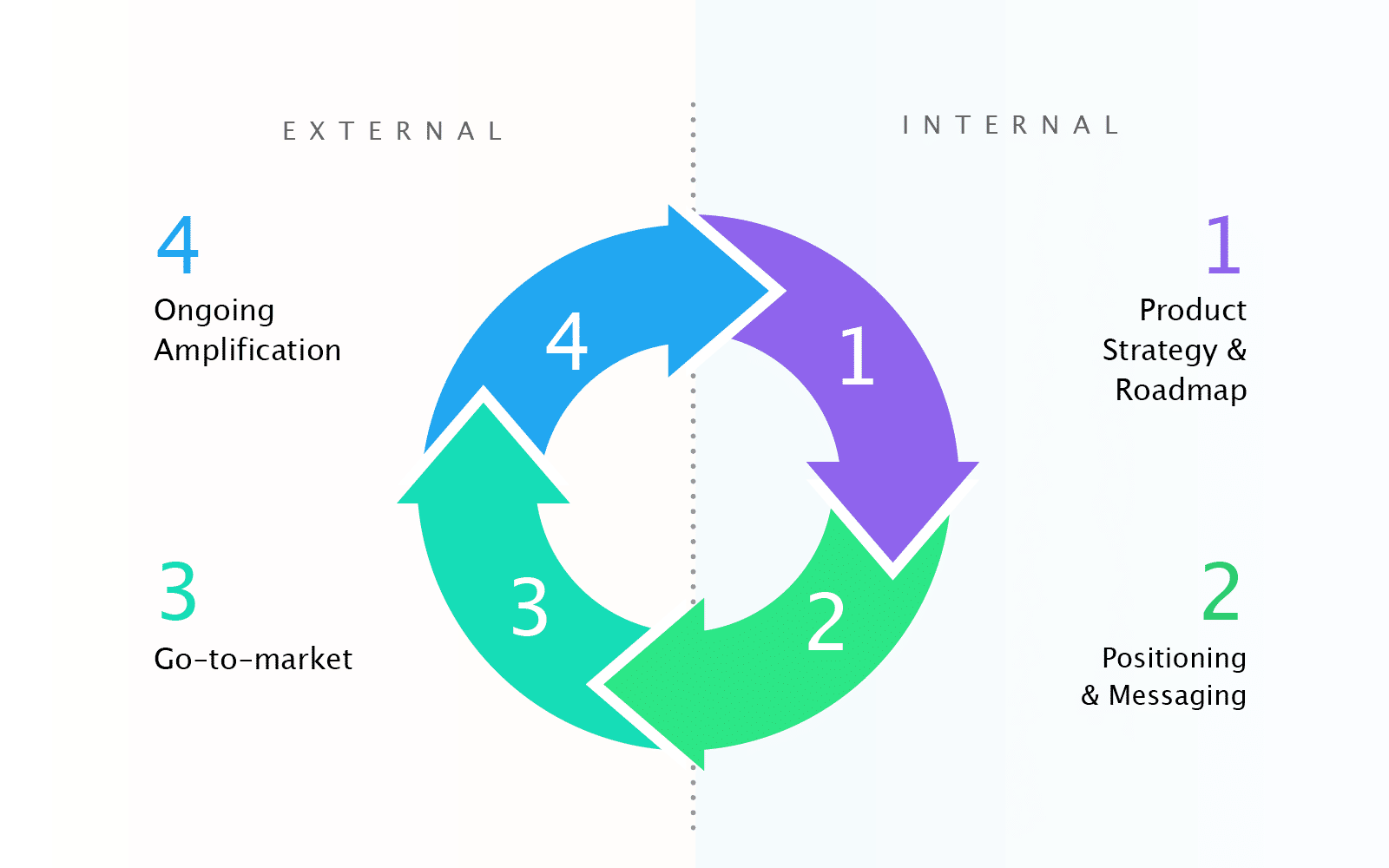I remember clearly when I first started in marketing. It was like walking into a web of possibilities. But as I explored further, understanding at its core, marketing is all about interacting with people. It’s not only about selling products; it’s also about knowing what motivates your audience and creating messaging that speaks to them.
Rest assured that you aren’t alone. Many people might view marketing as a complicated and ever-changing entity. But don’t worry, buckle up, because I’ve got some firsthand knowledge to share with you in the following sections of this article.
Understanding Marketing

I remember my first marketing job like it was yesterday. I was working for a small startup when my boss handed me a batch of flyers and said, “Go make magic happen.” Despite having no idea what I was doing, I went in headfirst and never looked back. Guess what, I did make lots of magic happen.
Now, imagine walking through a busy marketplace, surrounded by sellers trying to sell what they have, each competing for your attention and convincing you that their product is the best. That’s pretty much what marketing is all about.
It is about recognizing your requirements and desires as a customer and then producing a message that persuades you that a specific product or service is the best solution.
In essence, marketing is about asking the big question: “Where, when, and how does our consumer want to communicate with our business?” In other words, you should conduct focus groups, send out surveys, look into online buying habits, and continuously analyze and assess your client base.
Image by rawpixel.com on Freepik
Key Takeaways
- Marketing covers all of a company’s efforts to promote and sell its products or services to customers.
- Marketing makes use of the “marketing mix,” commonly known as the four Ps (product, price, place, and promotion).
- Traditional marketing approaches such as television, radio, mail, and word-of-mouth were once used extensively.
- Though traditional marketing is still prevalent, digital marketing today enables businesses to implement newsletter, social media, affiliate, and content marketing campaigns.
- Marketing is fundamentally concerned with taking a product or service, identifying its ideal customers, and drawing their attention to the available product or service.
What Is Marketing?
To be honest, I believe it goes beyond simply selling stuff. Understanding your target audince is essential for determining what motivates them, keeps them awake at night, and inspires them to open their wallets to make a purchase.
Marketing comprises all aspects of a strategy for converting a potential customer into a satisfied and loyal client. It includes every area, from advertising to market research. Hence, the three major goals of marketing will be to convince someone that your product is worth investing in, establish brand loyalty, and increase overall sales.
With the above explanation, it’s no surprise that this is a difficult process. Hence, marketers need to spend time getting to know their target clients. This is because, in a sea of marketing challenges, they can identify which strategies for marketing will work best.
A more formal understanding of marketing is an extensive and complex tool for business promotion. When done correctly, execution can lead to increased income, improved brand awareness and reputation, and increased client retention rates. But, since there are a lot of strategies out there, I think it’s best to combine at least a couple to get the greatest outcomes.
Furthermore, one of the most important lessons I’ve learned in my years of marketing is that it’s not about pushing items or services on people; it’s about adding value and developing relationships. So, whether you’re creating a smart advertisement or writing a meaningful email, the goal is always the same—to connect with your audience on a deeper level.
Understanding How Marketing Works: The 4 P’s of Marketing

According to studies, about 90% of small businesses invest in marketing. This is because marketing is an excellent tool for increasing awareness of your products as well as establishing yourself as a reliable and reputable brand in your chosen niche.
Hence, before you jump on the marketing train with your small business, a good first step is to consider the four Ps of marketing.: The 4 Ps of marketing is a popular framework for understanding the areas involved in marketing strategy. Sometimes known as the marketing mix, the four Ps of marketing — product, price, place, and promotion — are vital to every good marketing campaign.
#1. Product: What Makes You Shine?

A product is an item or goods that a business intends to offer to clients. However, the aim is that the product needs to fill a gap in the market or satisfy consumer demand for a larger amount of an already available product.
This is all about what you are offering. It is not only the physical product, but also the features, benefits, and experience it offers. Think about it: are you advertising a refreshing beverage or a cool way to quench your thirst on a hot day?
Let’s say you have an idea for a product that you want your company to market. What happens next? Truth be told, you’re unlikely to be successful if you simply start selling it.
Instead, you need your marketing team to conduct market research and respond to some crucial questions. Like, who is your target audience? Is there a market fit for this product? What messaging will drive product sales, and on which sites? How should your product designers improve the product to increase its chances of success? What do focus groups think about the product, and what questions or concerns do they have?
Similarly, you should use the answers to these questions to better understand the product’s demand and improve product quality by highlighting problems raised by focus groups or survey participants.
#2. Price: Striking the Right Balance

Price refers to how much the business will charge for the product. Let’s be honest: pricing is an important consideration when making a purchase. What this means is, that good marketing requires selecting a price that reflects the worth of your product while also taking into account issues such as competition and production costs.
In other words, your marketing team should look into competitors’ product costs or conduct focus groups and surveys to see how much your ideal customer is willing to pay. Therefore, marketers can look at industry information and consumer analysis to determine an appropriate price range.
#3. Place: Getting Your Product There

This relates to how your product or service reaches its intended audience. These days, this would include online markets, social media sites, and your website. However, don’t overlook traditional channels such as brick-and-mortar stores for some products!
This means that the marketing team must use its knowledge and research of your company’s customers to make recommendations on how and where to sell your goods. Perhaps they believe an e-commerce site performs better than a physical store, or vice versa. Alternatively, they can provide insight into which places are most viable for selling your goods, whether nationally or worldwide.
#4. Promotion: Spreading the Word

Here’s where things get exciting! Promotion is all about creating a message that connects with your audience and persuades them that your product is the solution they’ve been seeking. This P is probably the one you expected from the start:
Hence, promotion refers to any online or print advertisement, event, or discount created by your marketing team to raise knowledge and interest in your product, which will eventually lead to increased sales. During this stage, you are likely to witness approaches such as public relations campaigns, commercials, and social media promotions.
Types of Marketing
Essentially, the location of your marketing initiatives is determined only by where your customers spend their time. So, it is up to you to perform market research to identify which sorts of marketing — and what combination of tools within each type — are most effective for growing your brand.
Marketing consists of a vast and diversified set of strategies. Because the industry is constantly changing, certain organizations may benefit more from the techniques outlined below than others.
#1. Traditional Marketing Strategies

Image by master1305 on Freepik
Before the arrival of technology and the Internet, traditional marketing was the major method by which businesses promoted their products to consumers. Traditional marketing strategies include:
A. Outdoor Marketing
This includes public advertising displays outside a consumer’s home. Billboards printed advertisements on benches, vehicle sticker wraps, and public transit advertisements are all examples of this.
B. Print Marketing
This includes little, readily printed text that can be replicated. Traditionally, firms frequently mass-produced printed items because the content was the same for all clients. Today, materials can now be distinguished because of increased printing process flexibility.
C. Direct Marketing
This means providing specific content to prospective customers. However, some printed marketing materials could be mailed. Coupons, vouchers for free goods, and leaflets are further examples of direct marketing tools.
D. Electronic-Marketing
This includes the use of television and radio to advertise. With this, a corporation can deliver information to a consumer through visual or audio media, which may capture a viewer’s attention more effectively than a printed form.
E. Event Marketing
This comprises seeking to collect potential clients at a certain location to speak with them or showcase things. This includes conferences, trade exhibitions, seminars, road shows, and private events.
#2. Digital Marketing Strategies

The arrival of digital marketing altered the marketing sector forever. From the days of pop-up advertising to customized placements based on the number of people watching, there is now, a better means for businesses to engage clients called digital marketing.
A. Search Engine Marketing
This involves corporations aiming to improve search traffic in two ways. First, businesses can pay search engines to appear on results pages. Second, businesses can prioritize search engine optimization (SEO) tactics to organically rank high in search results.
B. Email Marketing
Companies collect e-mail addresses from customers or potential customers and send out messages or newsletters. Also, coupons, discounts, and prior information on impending sales can all be included in these messages.
This involves establishing a web presence on certain social media channels. Companies can use sponsored adverts, similar to search engine marketing, to bypass algorithms and increase their chances of being noticed by viewers. Otherwise, a brand might try to expand organically by producing content, engaging with followers, and sharing media such as images and videos.
D. Affiliate Marketing
This requires using third-party advertising to generate client interest. An affiliate who will receive a commission from a sale is more likely to engage in affiliate marketing since the third party is motivated to drive a sale for a product that is not their own.
E. Content Marketing
It involves developing content, such as eBooks, infographics, video seminars, or other digital content. The aim, however, is to manufacture products (most times for free) to offer product information, get customer information, and also encourage users to be involved with the brand not just the content.
Understanding Marketing: Common Misconceptions
Today, I want to lift the veil and reveal some of the most common marketing misconceptions. As someone who has spent a lot of time in the marketing industry, I’ve seen these myths pop up repeatedly. But don’t worry; I’m here to clarify the problem and offer some personal insights to help you navigate the confusing world of marketing. Okay Before we go into the beautiful world of marketing strategies, let’s clear the air.
#1: Marketing Equals Sales
When I first started in marketing, my primary goal was to increase sales. But, over time, I found that taking a more holistic strategy, focused on brand loyalty and trust, resulted in longer-term, more sustainable growth.
Gone are, the long-held assumption that marketing is all about selling items and making sales. Sure, sales are important, but marketing encompasses far more than that. It is about developing relationships, adding value, and interacting with your target audience on a deeper level. In my experience, the finest marketing does not feel like marketing at all, but rather like a genuine chat between friends.
#2: Marketing is Expensive
I will never forget when our marketing budget was cut in half overnight. Instead of giving up, my colleagues and I brainstormed solutions. We concentrated on grassroots activities, utilized social media influencers, and maximized our available resources. And you know what? We exceeded our targets without spending a fortune.
Sure, marketing may be expensive if you spend money on every new method or platform that comes along. However, successful marketing does not have to cost a lot of money. Some of the most effective marketing efforts I’ve worked on depended on imagination and creativity rather than large expenditures.
#3: Marketing is Only for Big Businesses
When I first started my little business, I was terrified by the prospect of competing with larger industry competitors. However, I quickly recognized that my size was an advantage. I was able to change direction rapidly, try out new ideas, and form true connections with my clients in ways that larger firms could not.
In the same way, this could not be far from the truth. Whether you’re a one-person company or a global corporation, marketing is critical to success. Smaller businesses generally have an advantage when it comes to marketing since they are more adaptable, nimble, and able to engage with their audience on a personal level.
#4: Marketing Needs a High Level of Technical Proficiency
While some fundamental digital knowledge is beneficial, you don’t have to be a coding expert to be a marketing master. This is because there are numerous user-friendly tools and platforms available to assist you with creating appealing content, managing your social media presence, and tracking your marketing efforts. Plus, the marketing profession is all about creativity and storytelling, which are talents that everyone can learn!
Understanding Marketing: Overcoming Challenges
Speaking of challenges, allow me to give a brief tale from my own experience. When I initially began working in marketing, I fell prey to the “gleaming object fallacy.” I was continuously following the latest trends and the most popular social media platforms, but I neglected to focus on developing an organized plan. It was overwhelming and ultimately futile.
In the end, what I discovered is that effective marketing requires focus. This means you must identify your target audience, establish clear goals, and select the marketing channels that best meet your demands.
So, what are some useful tips for avoiding these typical pitfalls?
#1. Know Your Audience
Before you start sending communications, figure out who you’re attempting to reach. What are their needs, desires, and pain points?
#2. Set SMART Goals
Don’t simply aim for “more sales.” Make sure your goals are specific, measurable, achievable, relevant, and time-bound.
#3. Focus on Value
Everyone is constantly harassed with marketing messages. So, cut through the noise by providing useful information that educates, entertains, or solves their concerns.
#4. Stay Consistent
Marketing is an endurance race, not a sprint. Show up consistently, interact with your audience, and track your outcomes to determine what works and what doesn’t.
So there you have it! Marketing is not a frightening predatory but rather a powerful instrument for interacting with your target audience and achieving your business objectives. You’ll be well on your way to being a marketing expert if you understand its fundamental concepts and avoid common misconceptions.
Effective Marketing Strategies
Check out this detailed checklist for more effective results
What is a Marketing Strategy?
A marketing strategy is a company’s overall plan for promoting the purchase and sale of its goods or services. Similarly, an effective marketing plan should be centered on the firm’s value proposition, which communicates to customers what the company stands for, how it runs, and why it merits their business.
As a result, the marketing teams will have a better understanding to guide their initiatives across all of the company’s products and services. For instance, Walmart (WMT) is well-known as a bargain retailer with “everyday low prices,” and its business operations and marketing strategies are based on that concept.
After settling on your marketing strategy, you’re nearly ready to launch your first campaign. But, before you jump in, consider some of these marketing best practices. This is because they will keep you on track and prevent costly mistakes as you try to spread the word about your company.
#1. Identify Your Goals
While sales are the ultimate objective for every business, you should also have short-term goals like building authority, improving client involvement, and generating leads. These smaller goals provide quantitative criteria for the success of your marketing strategy. Take strategy to be the high-level concept, and planning to be the process by which you achieve your objectives.
#2. Study Your Customers
Every product or service has a suitable customer, so you should understand who they are and where they hang out. If you sell power tools, you will select marketing channels where general contractors can see your message. In other words, determine who your customer is and how your product will improve their life.
#3: Generate Your Message
Now that you’ve determined your goals and who you’re selling to, it’s time to create your message. This is your time to demonstrate to potential customers how your product or service will benefit them and why you are the only firm that can supply it.
#4. Define Your Budget
How you spread your messaging might be determined by your budget. Will you be buying advertising? Do you want to go viral on social media organically? Sending out press releases to garner media attention? This means your budget will determine what you can afford to do.
#5. Determine Your Channels
regardless of, the best message requires a proper setting. Some businesses may see greater value in writing blog entries for their website. Others may have success with paid advertisements on social media channels. So, find the best venue for your material.
#6. Measure Your Success.
To tailor your marketing, you must first determine whether it is reaching the intended audience. Then, determine your measurements and how you will assess the performance of your marketing campaigns.
Furthermore, businesses must offer their products and services to create revenue and position themselves for success. To market their products or services, they must inform consumers about them. They must also persuade customers to buy them and convert them away from competitors. This means having a marketing strategy that defines this procedure and others is an important step in converting prospects into customers.
Benefits of Marketing
Imagine a wonderful invention—a breakthrough new device that would make everyone’s lives easier. But, what’s the point if no one knows it exists? This is where marketing comes in. It connects a good product or service to the individuals who can profit from it. Effective marketing benefits businesses in a variety of ways.
#1. Audience Generation
Marketing enables a corporation to target those who it believes would benefit from its product or service. Sometimes people are aware that they have a need. They don’t always realize it. Marketing allows a company to connect with a group of people that suit the demographic that it wants to serve.
#2. Inward Education
Marketing is useful for collecting information that can then be processed internally to generate success. Consider market data that reveals that a particular product is mostly purchased by women aged 18 to 34 years. By gathering this data, a corporation may better understand how to appeal to this population, increase sales, and make better use of resources.
#3. External Education
Marketing can also be used to communicate with the general public about what your company does, what items you sell, and how your firm can improve the lives of others. Marketing can be instructive, and educate others outside your firm about why they need your product. Furthermore, marketing campaigns allow a company to identify itself, its history, its owners, and its motivation.
#4. Branding
Marketing enables a corporation to adopt an aggressive approach to developing a brand. Instead of letting a consumer’s interactions shape their opinion of a company, a corporation engages a customer ahead of time with specialized content or media to elicit specific feelings or reactions. This enables a corporation to construct its image before the buyer even interacts with its products.
#5: Financial Performance
The primary objective and advantage of marketing is to increase sales. Customers are more inclined to engage in sales when their relationships are solid, well-defined, and good. When marketing is done well, customers gravitate toward your firm, giving you a competitive advantage over your competition. Even if the items are identical, marketing can provide a competitive advantage for why a client chooses you over someone else.
What is the golden rule of marketing?
The most important golden rule is to thoroughly discover what your clients need and want, and then demonstrate that you can give them the service that meets those demands.
Can I learn marketing on my own?
Yes, many topics are available in this field for you to learn on your own
What is the difference between marketing and sales?
Sales is the exchange of products or services for money, whereas marketing is the persuasion and promotion of those goods or services. Marketing comes before sales.
References
- investopedia.com
- blog.hubspot.com
- forbes.com
- .coursera.org






